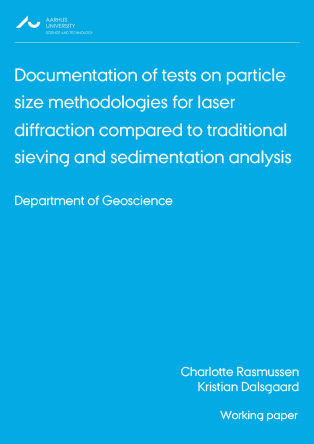Working paper Documentation of tests on particle size methodologies for laser diffraction compared to traditional sieving and sedimentation analysis
Keywords:
Soil, sediment, particle size, texture, PSD, sedimentation, clay, sieving, laser diffraction, Fraunhofer, Mie theorySynopsis
Sieving and sedimentation analyses by pipette or hydrometer are historically the traditional methods for determining particle size
distributions (PSD). A more informative and faster alternative has for years been laser diffraction (LD). From 2003 to 2013 the authors of this paper have worked intensively with PSD and performed various tests and investigations, using LD, sedimentation (by pipette) and sieving. The aim was to improve and understand the relationship between these various techniques, pre-treatment effects and preferably find a unifying correlation factor.
As a result, method comparisons of LD and sieving/sedimentation are difficult, as LD is a 3D optical volume measurement, sieving is a 2D width measurement, and sedimentation is density dependent. Platy particles like clay are generally measured to be coarser than traditional methods when LD is used. For LD the clay-boundary is found at 6 μm.
For LD, it seems beneficial to split a soil or sediment sample (<2 mm) into 3 fractions at 63 μm and 250 μm respectively. Well sorted samples (like clay, fine silt or windblown sand) can be measured without splitting into fractions, or by splitting at i.e. 63 μm, depending on the clay content and expected PSD.

